Us night photographers love to explore remote, secret locations. These hidden locations can be anywhere. But I do really like them when they are hidden in one of the wide-open lands that exist in our national park preservation system.
You may explore to your heart’s content, far away from urban areas. But with that, you also need to take the appropriate precautions.
The Mojave National Preserve is dotted with mines. Almost all of these are not anywhere near a paved road. Indeed, most of the roads in Mojave National Preserve are dirt roads. And most of them are rough. I certainly found that out from firsthand experience.
Mining on a black cinder cone
Mojave National Preserve is home to over a dozen cinder cones, the result of ancient black basalt lava flows. A bit of detective work, judicious use of Google Earth, and some driving around can yield amazing locations for exploring.
Obviously, many of these locations are historical. You may not damage or remove anything. Because some people do just that, most of us night photographers do not reveal the locations. Besides, so much of the sense of wonder and thrill is in the discovery.
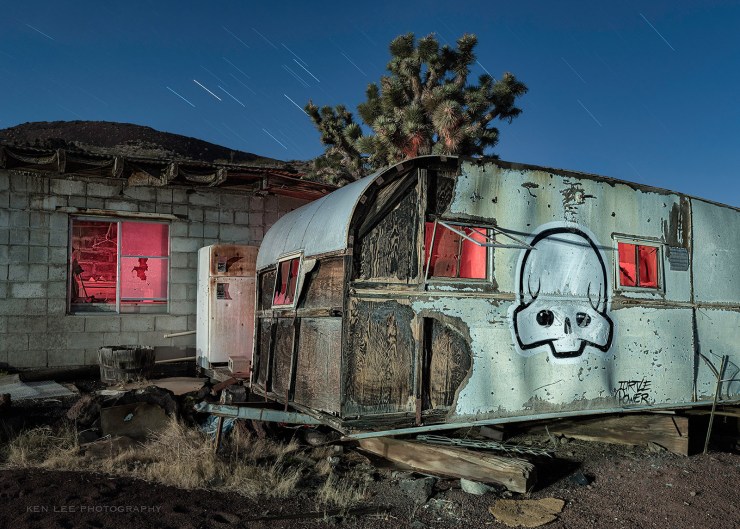
Caution! Be prepared!
Every year, several people venture into the Mojave Desert and do not come out alive. Whether it’s from lack of preparation, dehydration, lack of water, lack of supplies, underestimating the harshness of the desert climate, or some combination of the above, it is a sad fact of the desert.
With that in mind, I have ample food, many gallons of water, emergency supplies, extra clothes and much more. This turned out to be very helpful.
The dangers of venturing out alone
I almost never venture to remote locations by myself. I’ve only done it once before. But this time I did it, going quite far into the desert at night. I had told people the precise location of where I was going, had a cell signal (most of the time), and even had my wife tracking my whereabouts. And I had tons of supplies and food and water.

Flat, flat, flat …
But things happen. I got a flat tire around midnight, noticing it while returning from one of the mining camps. It wasn’t just any ol’ flat tire either. It had a 2-inch gash at the bottom. My lucky streak had run its course. I hadn’t gotten a flat in over 25 years. But when I get a flat, I get a flat. There was no way to repair a flat tire with a 2-inch gash.
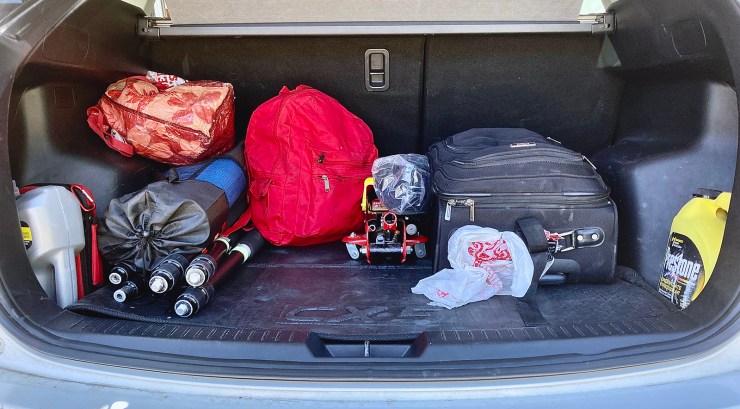
I didn’t panic. In the back of my car, I had two car jacks, one of them a small 2-ton floor jack. I took off the very flat tire without an issue. However, the floor jack had sunken into the sand. I shook my head, realizing that I had not brought a flat piece of wood, something like plywood, to alleviate the effects of sand and uneven ground. I ended up digging some of the sand, rocks, and dirt out so I would have enough room to put on the spare. It took me 15 minutes of digging before I was able to put on the spare.
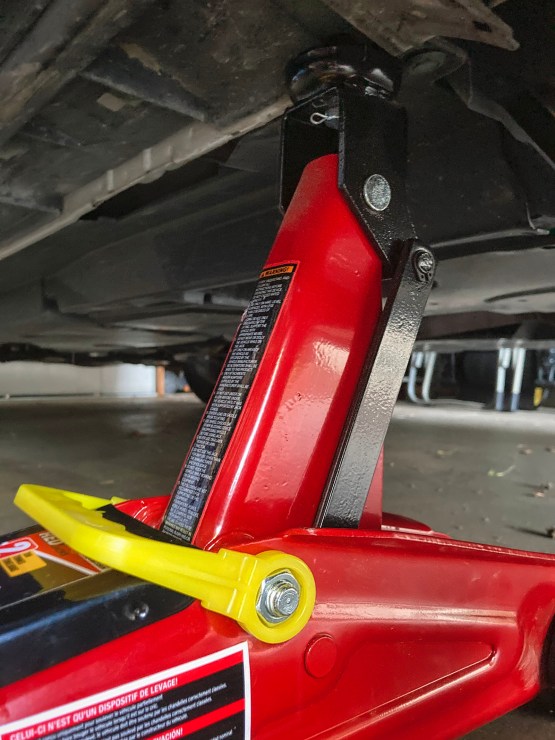
Driving back on a spare
I drove back through about fifteen miles of dirt roads, driving very slowly to reduce the chances of getting another flat, just to get to the nearest paved road. Whew! I then drove very slowly on Cima Road and the highway, following the late night trucks to force myself to go slowly.
I arrived back at the motel around 3 a.m. However, I was a sandy, grubby mess despite trying to clean myself off after fixing the flat.
Although I don’t regret the adventure, I will not be going that far again. I had this personal rule for a reason. I would keep it to within about four miles of the nearest paved road, not 15. And I would get a better shovel and some plywood to help with my car jack.
Exploring mining camps closer to paved roads
If I were going to stick to my personal rule, I would need to choose a mine that was much closer to a paved road. Thankfully, those exist too. I chose one that was closer to the nearest paved road.
This area had a beautiful farmhouse with vines. The location ended up being a beautiful choice. I again drove through a beautiful grove of Joshua Trees and craggy rocks, bumping along a dirt road, and arriving just before the moon rose from the mountains.

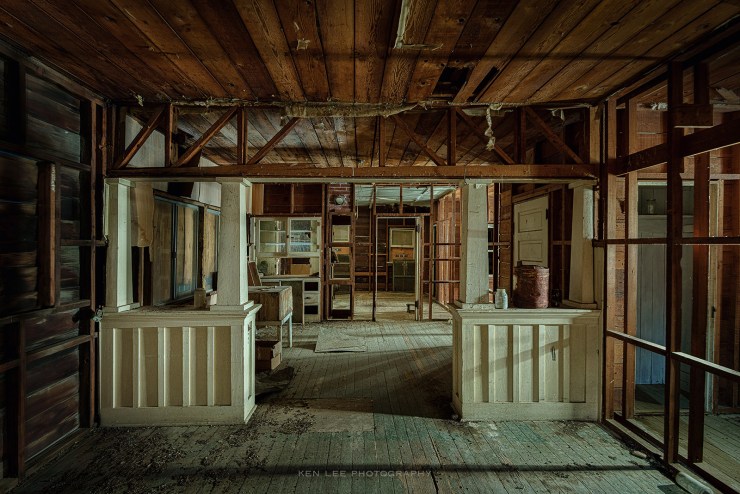
A cool breeze, a full moon rising in back of me, and the last glow of the setting sun to the west. The second I stepped out of the car, I was transfixed by the beauty of it all and knew this would be the first photo.
The Mojave Memorial Cross
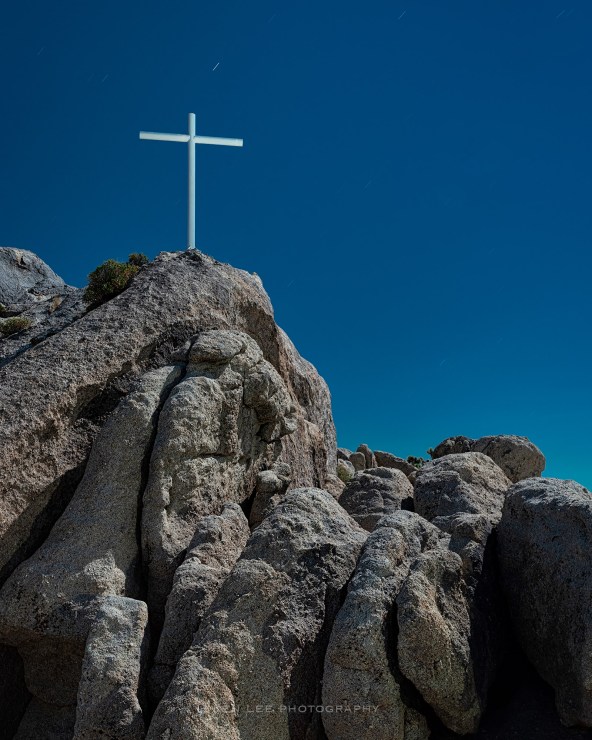
After photographing the farmhouse and surrounding area, I drove down to the Mojave Memorial Cross, rising up atop Sunrise Rock to greet the evening. There was no way I was going to drive past this without photographing it. There was someone in an RV camping there. They may have never known I was there. I took four photos in fifteen minutes.
The original cross was erected in 1934 to honor those killed in war, with World War I vet and local resident John Riley Bembry serving as caretaker. The Memorial was destroyed by vandals in 1983, boarded up in 2002 after temporarily being declared illegal due to separation of church and state concerns, stolen in 2010, found in Half Moon Bay and rededicated in 2012. This is quite accessible, just off Cima Road, and is in the National Preserve maps.
Residences of the Mojave National Preserve
There are several farms and private residences and ranches and barns scattered throughout Mojave National Preserve. I happened to have driven past a barn and a curious white structure. I thought I would photograph it on the way back to the motel.
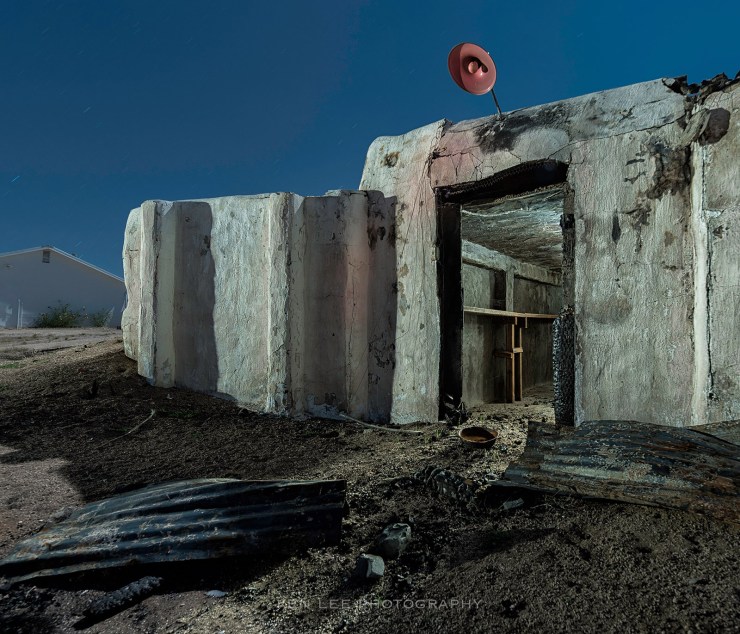
Above is what appears to be an abandoned charred back storage area of a house in the Mojave Desert. I am guessing that this fell victim to the apocalyptic Dome Fire in August 2020. This fire has probably destroyed 1.3 million Joshua Trees and killed or affected who knows how many other plants, animals and people. I photographed this quickly before returning back to the car. It had been two beautiful but long nights in a row.
Thankfully, this second night didn’t involve a flat tire. And for that, I was grateful.
More to explore
On future trips, I might visit the Kelso Dunes, Lava Tubes or the Joshua Tree Forest. The Preserve certainly seems to have its share of fascinating places.
Tell your story with the second annual Visual Storytelling Conference!
Experience four days of interactive, online training sessions featuring a range of educational content with experienced photographers and content creators. This free event kicks off with a series of technical boot camps to build essential skills, followed by live, online sessions on photography, video, business and social media. Join live from March 10-13, 2022!
